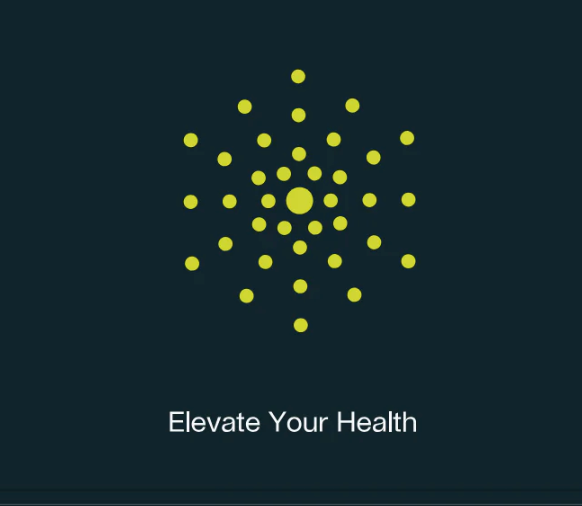Men's fitness encompasses a range of physical capacities essential for optimal health and performance throughout life. Research indicates that fitness for men involves complex physiological mechanisms affecting multiple body systems, with varying levels of evidence supporting different approaches. This report examines the components, mechanisms, and evidence-based practices in men's fitness, distinguishing between proven and unproven approaches.
Understanding Essential Components of Men's Fitness
Essential men's fitness refers to the fundamental physical capacities necessary for men's health and wellbeing. These components work together to create overall physical fitness and are particularly important given men's physiological characteristics and health risks. Cardiorespiratory fitness, measured through maximal oxygen uptake (VO₂max), represents a cornerstone of men's fitness and serves as a powerful predictor of overall health status. Research shows that this capacity involves the efficiency of oxygen transport and utilization systems throughout the body, affecting everything from daily energy levels to long-term cardiovascular health outcomes. Middle-aged men typically have a proportionality factor of heart rate at maximal exercise to heart rate at rest of approximately 12, rather than the value of 15 observed in younger, well-trained adults3. This measurement provides insight into cardiovascular conditioning and adapts with age, weight status, and lifestyle factors including smoking and physical activity levels.
Muscular strength and endurance form another essential component, with particular importance for men due to their naturally higher baseline muscle mass and testosterone levels. These characteristics not only support functional movement and daily activities but also contribute to metabolic health by increasing basal metabolic rate. Core strength deserves special mention, as studies of male athletes show it significantly impacts overall performance and injury prevention13. Core strength training focuses on stabilization-related muscle groups at the trunk, spine, pelvis, and lower limbs, forming the foundation for efficient movement patterns in both athletes and non-athletes.
Body composition, particularly the ratio of lean mass to fat mass, plays a crucial role in men's health outcomes. Research demonstrates that maintaining healthy body composition through appropriate fitness regimens can significantly impact metabolic health markers and reduce chronic disease risk. Men's fitness publications frequently emphasize lean, muscular physiques, though this emphasis sometimes lacks scientific foundation for health benefits versus aesthetic appeal9. Balance, flexibility, and functional movement comprise the final essential components, becoming increasingly important with age as they help prevent falls and maintain independence in daily activities17.
Physiological Mechanisms Underlying Fitness in Men
The mechanisms through which exercise improves men's fitness operate across multiple physiological systems. Cardiovascular adaptations include improved heart muscle efficiency, enhanced cardiac output, better vascular elasticity, and reduced blood viscosity12. These adaptations collectively lower resting heart rate and improve recovery capacity from physical exertion. Research with elderly men shows that programmed physical activity significantly decreases blood viscosity (by approximately 19%), which improves circulation and oxygen delivery to tissues12.
Neuromuscular pathways activated during resistance training lead to both structural and functional adaptations. Initial strength gains come primarily through improved neural recruitment patterns—the brain learning to activate more muscle fibers simultaneously—followed by actual hypertrophic changes in muscle tissue with continued training. Core strength training specifically enhances the coordination between trunk stabilizers and limb movement, improving force transfer throughout the kinetic chain and enhancing performance in various athletic activities including basketball fundamentals13.
Metabolic mechanisms of fitness include enhanced mitochondrial density and function, improved glucose regulation, and more efficient fat oxidation. These changes support better energy production and utilization during both rest and activity. Hormonal responses to exercise include acute increases in testosterone, growth hormone, and catecholamines, which collectively support adaptations in muscle tissue and energy systems. Chronic exercise establishes more favorable baseline hormonal profiles that support overall health and fitness maintenance.
Evidence-Based Approaches to Men's Fitness
Research provides strong support for structured exercise programs that include both aerobic and resistance components. A six-month aerobic exercise program for sedentary elderly men demonstrated significant improvements in memory (21%), decreased blood viscosity (19%), and higher aerobic capacity (48%) compared to control groups12. These findings highlight the multisystem benefits of programmed physical activity, extending beyond purely physical parameters to cognitive function. The evidence suggests that individualized programs targeting ventilatory threshold-1 intensity provide optimal benefits for men across age groups.
Core strength training shows clear evidence of effectiveness in enhancing overall athletic performance and functional capacity. Studies with male college basketball players demonstrate that targeted core training significantly improves athletic performance metrics including speed, agility, and sport-specific skills13. The mechanisms include improved force transfer between upper and lower body segments and enhanced stability during dynamic movements. This approach proves particularly beneficial for men engaged in sports requiring rotational power and quick directional changes.
Technology-enhanced fitness approaches have gained scientific validation in recent years. Kinect-based mixed reality (KMR) exercise programs show comparable or superior results to traditional unsupervised exercise in improving VO₂max, upper-body muscle endurance, and lower-body muscle strength and endurance6. These approaches may provide additional motivation and guidance, especially important when in-person training is unavailable. The evidence indicates that technology can effectively deliver structured exercise programs while potentially improving adherence through engagement and feedback mechanisms.
Physical activity shows strong evidence as an effective component of managing inflammatory conditions in men. Research demonstrates that regular physical activity in men with inflammatory arthritis improves cardiorespiratory fitness, muscle strength, mobility, and physical functioning while reducing disease activity, pain, fatigue, and stiffness1. These benefits extend beyond symptom management to enhanced quality of life and psychological wellbeing, making physical activity an essential component of comprehensive treatment approaches for inflammatory conditions.
Questionable Approaches and Exaggerated Claims
Despite the wealth of evidence supporting certain fitness approaches, many recommendations popularized in men's fitness media lack scientific validation. A comprehensive analysis of men's health-related magazines found that evidence supported only approximately 23-25% of their recommendations, while evidence was unclear, nonexistent, or contradictory for about 75-77% of recommendations4. This finding highlights the substantial gap between popular fitness advice and scientific evidence, creating potential confusion for men seeking effective fitness strategies.
Content analysis of leading men's fitness magazines reveals a strong emphasis on achieving lean, muscular physiques with very low body fat9. While aesthetically appealing, the extreme body compositions often showcased may be neither achievable nor healthy for many men without extraordinary measures. Research suggests that exposure to these idealized images may contribute to body dissatisfaction and potentially harmful behaviors aimed at achieving unrealistic physiques, raising concerns about the psychological impact of certain fitness messaging.
Simplistic formulas for predicting fitness parameters often fail to account for individual variations. For example, research shows that the proportionality factor of heart rate at maximal exercise to heart rate at rest varies significantly based on age, body mass index, smoking status, and activity level3. Using a single value across all men leads to inaccurate estimations of fitness capacity. This finding underscores the importance of individualized assessment and programming rather than one-size-fits-all approaches often promoted in fitness media.
Special Considerations in Men's Fitness
Age-related factors significantly impact fitness approaches for men. Research with middle-aged men demonstrates that chronological age, body composition, smoking status, and baseline activity levels all influence cardiovascular fitness metrics and response to exercise3. The proportionality factor in obese or smoking middle-aged men was one point lower compared to normal-weight or never-smoking peers, equivalent to approximately 10 years in chronological age. This finding highlights how lifestyle factors can accelerate or decelerate the aging process from a fitness perspective.
Men's health programs offer promising approaches to address healthcare disparities between men and women. Research indicates that such programs can serve as gateways to overall health, where specialists like urologists can identify broader health concerns and refer men to appropriate care5. Effective programs incorporate multiple medical specialties, patient navigators, and integrated electronic records to provide comprehensive care addressing men's unique health-seeking behaviors. This holistic approach recognizes that fitness represents just one component of men's overall health.
Fitness considerations vary across demographic groups, with research suggesting that marginalized men may face unique barriers and require tailored approaches. Moving research on marginalized men from the periphery to the center of men's health research may yield critical insights into determinants of men's health disparities and potential interventions8. Understanding how structures of marginalization interact with gender and masculinities can refine approaches to men's fitness and health promotion across diverse populations.
Conclusion: Building a Foundation for Effective Men's Fitness
Essential men's fitness encompasses multiple physiological systems and capacities that together support overall health, functional ability, and quality of life. The evidence strongly supports structured programs combining aerobic and resistance training, with intensity individualized to physiological parameters rather than arbitrary formulas. Core strength training, technology-enhanced approaches, and physical activity for managing health conditions all demonstrate scientific validity. However, many popular recommendations lack evidence, highlighting the need for critical evaluation of fitness information.
The most effective approach to men's fitness involves individualized programming based on scientifically validated principles rather than pursuing idealized physiques or following unsubstantiated trends. Age, health status, and individual variations significantly impact appropriate fitness approaches and expected outcomes. Moving forward, men's fitness would benefit from greater integration with comprehensive health approaches, addressing both physical capacity and the broader determinants of men's health across diverse populations.
As research continues to evolve, the gap between evidence-based practice and popular fitness approaches may narrow, providing men with more effective strategies for achieving and maintaining essential fitness throughout life. The current evidence suggests that consistent, progressive training targeting key physiological systems yields the most reliable benefits for men's fitness and overall health.
Citations:
- https://www.semanticscholar.org/paper/cfa915df39c85a6c0e51b2c164e79c4fef794d98
- https://www.semanticscholar.org/paper/491d05a3da5e1a4dbf6e1a08acc6a63d16150d18
- https://www.ncbi.nlm.nih.gov/pmc/articles/PMC8443998/
- https://www.ncbi.nlm.nih.gov/pmc/articles/PMC7322823/
- https://pubmed.ncbi.nlm.nih.gov/32876003/
- https://www.semanticscholar.org/paper/7fca344d33d587916f197515198ef6eb351f95ef
- https://www.semanticscholar.org/paper/54275f72821ebc61aef4d284bbf620efedc83cc2
- https://www.ncbi.nlm.nih.gov/pmc/articles/PMC6142151/
- https://www.semanticscholar.org/paper/ecd0892b165d1553b1bf949b1020fe37bd846ee9
- https://www.ncbi.nlm.nih.gov/pmc/articles/PMC10987448/
- https://www.semanticscholar.org/paper/9ce9386cf48888a0f6bca0f61e1bf363058ed40b
- https://www.ncbi.nlm.nih.gov/pmc/articles/PMC4568808/
- https://www.semanticscholar.org/paper/1c533512ebfd1acd1bbe324fc5df39934271c5c5
- https://www.ncbi.nlm.nih.gov/pmc/articles/PMC9699683/
- https://pubmed.ncbi.nlm.nih.gov/24839657/
- https://www.semanticscholar.org/paper/5cad8a31e7c01a835cd2a1dbf25a204057e37b6e
- https://pubmed.ncbi.nlm.nih.gov/24000423/
- https://www.ncbi.nlm.nih.gov/pmc/articles/PMC11357178/
- https://pubmed.ncbi.nlm.nih.gov/19482812/
- https://www.semanticscholar.org/paper/14f2fb151408c8d64371e9138deccf770830ef0c
- https://www.ncbi.nlm.nih.gov/pmc/articles/PMC10990936/
- https://www.ncbi.nlm.nih.gov/pmc/articles/PMC9100030/
- https://www.semanticscholar.org/paper/bc75d877f30ea47fdf515d4d5d38d53b38a10847
- https://pubmed.ncbi.nlm.nih.gov/38315561/
- https://www.ncbi.nlm.nih.gov/pmc/articles/PMC11288044/
- https://www.ncbi.nlm.nih.gov/pmc/articles/PMC9174581/
- https://www.semanticscholar.org/paper/5c5d9f93e73eb6a85f1ab9e57db9487db1c54a51
- https://pubmed.ncbi.nlm.nih.gov/25707812/
- https://www.ncbi.nlm.nih.gov/pmc/articles/PMC5068951/
- https://pubmed.ncbi.nlm.nih.gov/27071129/
- https://www.ncbi.nlm.nih.gov/pmc/articles/PMC10799129/
- https://www.ncbi.nlm.nih.gov/pmc/articles/PMC6401654/
- https://www.ncbi.nlm.nih.gov/pmc/articles/PMC8313632/
- https://www.semanticscholar.org/paper/d0506d29b22567c3fdf6178e6f80328d0dabe371
- https://www.semanticscholar.org/paper/3448543d1b72f9497a5439b2aa6f6f0e366652db
- https://www.semanticscholar.org/paper/1857240fe7f15d5b27968e3e395af324314dbcd8
- https://www.semanticscholar.org/paper/0b2bc77fc6117ebcf90426e8ca6a923656534448
- https://www.semanticscholar.org/paper/0a9546269d1b8817a90bbd3eebf836bf04ca092b
- https://www.ncbi.nlm.nih.gov/pmc/articles/PMC10314802/
- https://www.semanticscholar.org/paper/24d90579c0b89a6952dc9eb4b4f846657853f69d
- https://www.semanticscholar.org/paper/f2bab3f79374431a7359c64d0dd350047766b0da
- https://pubmed.ncbi.nlm.nih.gov/31480979/
- https://www.semanticscholar.org/paper/ae5b2c244a90a3c04f5cfb21fbcff2d348d3f718
- https://www.ncbi.nlm.nih.gov/pmc/articles/PMC5584751/
- https://www.semanticscholar.org/paper/9665a18cda1f4a75db80c81577eefcdce047b794
- https://www.semanticscholar.org/paper/40a43a4dc609a1bb89922f8b11a1c860a4d16394
- https://www.semanticscholar.org/paper/aab31e5ad90ff2c4ab01743a48c1e232b1226334
- https://www.semanticscholar.org/paper/753744a81db260f3f7ba41f7543004a8cc995080
- https://www.ncbi.nlm.nih.gov/pmc/articles/PMC10331170/
- https://www.ncbi.nlm.nih.gov/pmc/articles/PMC8681464/
- https://www.semanticscholar.org/paper/a3e046d249037a72cbfed6a84ab95809fa198508
- https://www.semanticscholar.org/paper/0f6fa89ee6475707d44fde7d9881fcff04a03bd1
- https://pubmed.ncbi.nlm.nih.gov/30216251/
- https://www.ncbi.nlm.nih.gov/pmc/articles/PMC10846064/
- https://www.ncbi.nlm.nih.gov/pmc/articles/PMC6440068/
- https://pubmed.ncbi.nlm.nih.gov/39760426/
- https://www.ncbi.nlm.nih.gov/pmc/articles/PMC5671593/
- https://www.semanticscholar.org/paper/99e87225ef429ba1056b05a185dc15d2b5b23eb6
- https://www.semanticscholar.org/paper/c9469f1000902718611970b9647bf38118bad437
- https://www.ncbi.nlm.nih.gov/pmc/articles/PMC9912205/
- https://www.ncbi.nlm.nih.gov/pmc/articles/PMC10986989/
- https://www.semanticscholar.org/paper/bde82d14cb5637814eef2f5fc675363b52226522








